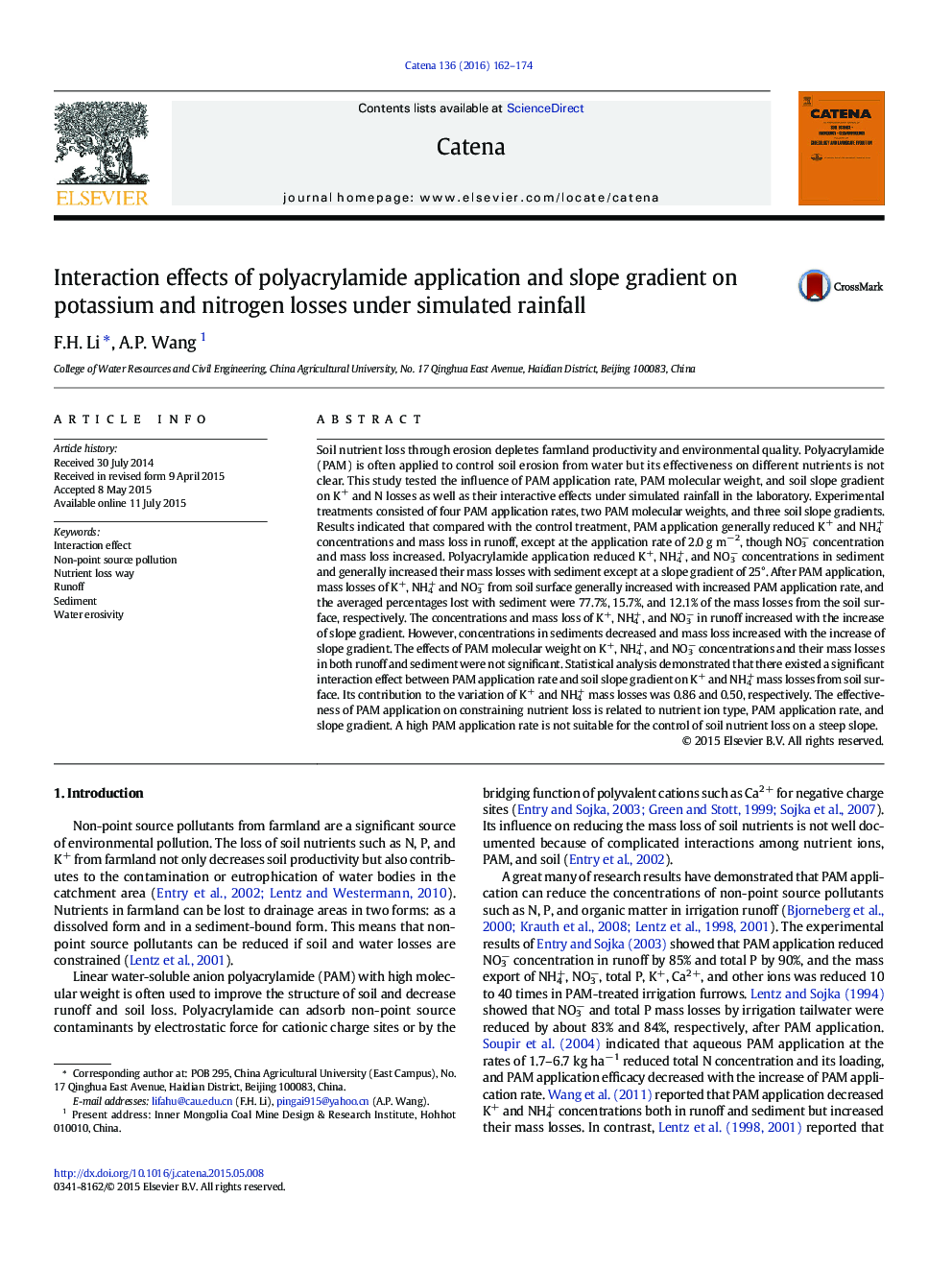| کد مقاله | کد نشریه | سال انتشار | مقاله انگلیسی | نسخه تمام متن |
|---|---|---|---|---|
| 4571010 | 1629216 | 2016 | 13 صفحه PDF | دانلود رایگان |
• Polyacrylamide (PAM) use reduced K+ and NH4+ concentrations and their losses but increased those of NO3− with runoff.
• Polyacrylamide use reduced K+, NH4+, and NO3− concentrations but increased their losses with sediment.
• The K+, NH4+, and NO3− losses from soil surface increased with the increased PAM use rate and soil slope gradient.
• A significant interaction effect between PAM use rate and slope gradient existed on K+ and NH4+ losses.
• A high PAM application rate on a steep slope had an obviously adverse effect on conserving soil nutrients.
Soil nutrient loss through erosion depletes farmland productivity and environmental quality. Polyacrylamide (PAM) is often applied to control soil erosion from water but its effectiveness on different nutrients is not clear. This study tested the influence of PAM application rate, PAM molecular weight, and soil slope gradient on K+ and N losses as well as their interactive effects under simulated rainfall in the laboratory. Experimental treatments consisted of four PAM application rates, two PAM molecular weights, and three soil slope gradients. Results indicated that compared with the control treatment, PAM application generally reduced K+ and NH4+ concentrations and mass loss in runoff, except at the application rate of 2.0 g m− 2, though NO3− concentration and mass loss increased. Polyacrylamide application reduced K+, NH4+, and NO3− concentrations in sediment and generally increased their mass losses with sediment except at a slope gradient of 25°. After PAM application, mass losses of K+, NH4+ and NO3− from soil surface generally increased with increased PAM application rate, and the averaged percentages lost with sediment were 77.7%, 15.7%, and 12.1% of the mass losses from the soil surface, respectively. The concentrations and mass loss of K+, NH4+, and NO3− in runoff increased with the increase of slope gradient. However, concentrations in sediments decreased and mass loss increased with the increase of slope gradient. The effects of PAM molecular weight on K+, NH4+, and NO3− concentrations and their mass losses in both runoff and sediment were not significant. Statistical analysis demonstrated that there existed a significant interaction effect between PAM application rate and soil slope gradient on K+ and NH4+ mass losses from soil surface. Its contribution to the variation of K+ and NH4+ mass losses was 0.86 and 0.50, respectively. The effectiveness of PAM application on constraining nutrient loss is related to nutrient ion type, PAM application rate, and slope gradient. A high PAM application rate is not suitable for the control of soil nutrient loss on a steep slope.
Journal: CATENA - Volume 136, January 2016, Pages 162–174
